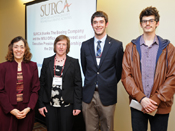Most violent era in America was before Europeans arrived

There’s a mythology about the native Americans—that they were all peaceful and in harmony with nature. It’s easy to create narratives when there is no written record.
But archeology keeps its own history and a new paper finds that the 20th century, with its hundreds of millions killed in wars and genocides, was not the most violent. On a per-capita basis that honor may belong to the central Mesa Verde of southwest Colorado and the Pueblo Indians.
Writing in the journal American Antiquity, WSU archaeologist Tim Kohler and colleagues document how nearly 90 percent of human remains from that period had trauma from blows to either their heads or parts of their arms.
Learn more about this myth-busting research at Science 2.0 and WSU News


